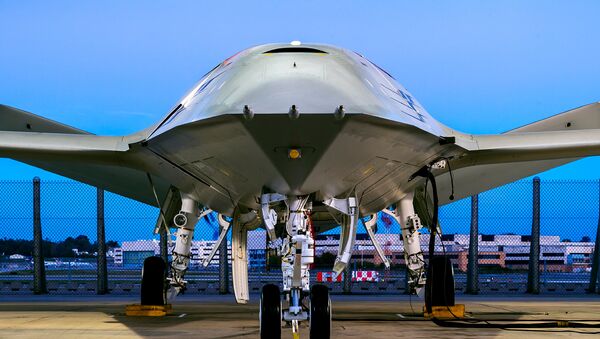The US Navy hopes to extend the range of its carrier-based air forces by hundreds of miles using the remotely piloted MQ-25 Stingray refueling drone. It’s already paid Boeing some $805 million for three test aircraft, but if the Navy doesn’t hurry up and finish the necessary system upgrades on two aircraft carriers while they’re still in port, the Stingray system could face a delay in testing of as much as three years.
“According to program officials, the Navy anticipated the submission of strategic low pricing for this contract because of investments made prior to development award,” the Government Accountability Office (GAO) wrote in a June 3 report.
“Program officials stated that, among other things, the Navy’s potential inability to maintain its schedule commitments could require modifications to the contract that would impact the fixed price terms. Specifically, the Navy faces limited flexibility to install MQ-25 control centers on aircraft carriers. If the Navy misses any of its planned installation windows, the program would have to extend MQ-25 development testing by up to 3 years,” the GAO warned, noting that “such a delay could necessitate a delay to initial capability and result in a cost increase.”
However, Navy officials don’t anticipate a delay in the Stingray’s initial operating capability (IOC), which is scheduled for January 2024, according to a Pentagon acquisition report from last year.
“The Navy is still planning to achieve [initial operating capability] in 2024,” Jamie Cosgrove, a spokesperson for Naval Air Systems Command, told Defense News. “A three-year extension of development testing and a delay to IOC is extremely unlikely and represents improbable scenarios where both aircraft carriers currently designated to support MQ-25 testing are unavailable due to operational requirements, or the program misses the planned periods to install the MQ-25 test equipment on those two carriers.”
“Should either of these unlikely scenarios occur, the program will reevaluate the schedule and determine how to best mitigate schedule impacts to deliver the mission-critical MQ-25 to the Fleet ASAP,” Cosgrove said.
The two warships in question, the aircraft carriers USS Carl Vinson and USS George H.W. Bush, both need special control and networking equipment to support operating the drone from their flight decks. Both ships entered port in February 2019 for lengthy repairs: the Vinson has been in its docking-planned incremental availability (DPIA) period at the Puget Sound Naval Shipyard in Bremerton, Washington, since 2018; and the Bush at Norfolk Naval Shipyard in Portsmouth, Virginia, where it’s been receiving a slew of upgrades.
However, the Vinson is due to return to San Diego, California, by August of this year, and the Bush is scheduled to finish its updates by June 2021, leaving little time for Stingray compatibility to be finished.
The Navy anticipates buying a total of 72 Stingrays, with the total cost of the program estimated at $15.2 billion. In September 2017, then-US Naval Air Forces commander Vice Adm. Mike Shoemaker told the magazine USNI Proceedings that the Stingray would “extend the air wing out probably 300 or 400 miles” beyond its present range from the carrier.



